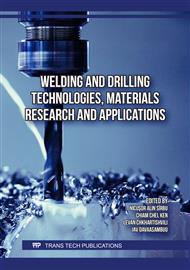p.41
p.49
p.59
p.73
p.91
p.101
p.111
p.119
p.125
Research on the Process of Peeling Buckwheat Grain on Roller Equipment with New Design Decks
Abstract:
The peeling efficiency is approximately 80% when processing buckwheat using a peeling machine that relies on friction and shear forces. In order to improve this efficiency, the design of this type of machine needs to be modified to better suit the unique characteristics of buckwheat grains. Thus, a mathematical model of the buckwheat peeling process has been developed using a peeling device with a new deck design. The model is based on a theoretical understanding of the process and takes into account the effects of friction and elastic deformation. The model accurately predicts the outcomes of the peeling process and the forces acting on the grain. In the deck compression design, forces are generated that act periodically at right angles to the grain direction, within the limits of material flexibility. Frictional forces, directly related to normal forces, are generated by the movement of the rotating roller and are determined by the elastic forces generated by the grain. Under the influence of these alternating forces, the grain is peeled in the gap between the rotating roller and the compressing deck. If the force applied to the grain is not greater than the elastic limit, there is no risk of kernel crushed. Based on these forces, a mathematical model has been developed to describe the process of grain hulling in the device. This model takes into account the physical properties of the grain and the design parameters of the device to predict the optimal conditions for hulling machine.Using the derived equation of motion, we can conclude that the larger the diameter of the rotating roller in the hulling device, the more accurate the simulation will be and the better the conditions will be for capturing grains within the working gap. This equation also allows us to calculate the productivity and power requirements of the hulling machine.
Info:
Periodical:
Pages:
101-109
Citation:
Online since:
November 2025
Authors:
Price:
Сopyright:
© 2025 Trans Tech Publications Ltd. All Rights Reserved
Share:
Citation:


